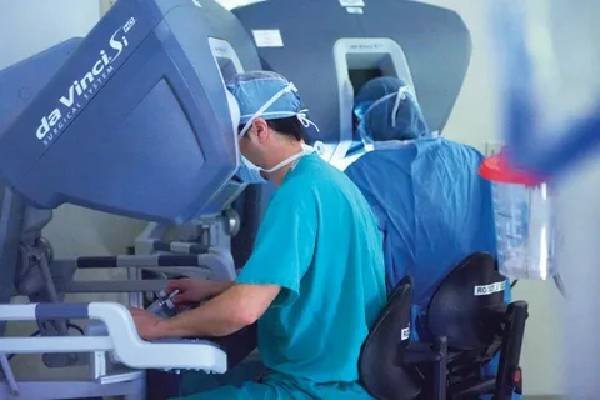Robotic Prostate Cancer Treatment: A Revolutionary Approach

Prostate cancer is among the most common cancers in men, and advancements in medical technology have transformed how it is treated. One of the most promising developments is robotic-assisted surgery, which offers precision, minimal invasiveness, and improved outcomes. This article explores the intricacies of robotic prostate cancer treatment, its benefits, and what patients can expect.
Understanding Robotic-Assisted Prostate Surgery
Robotic-assisted prostate surgery, often referred to as robotic prostatectomy, is a minimally invasive procedure. It utilizes a robotic surgical system, such as the da Vinci Surgical System, which allows surgeons to perform complex procedures with enhanced precision and control.
Key Features of the Robotic System
- High-Definition Visualization: Provides a 3D view of the surgical area.
- Enhanced Dexterity: Robotic arms mimic human hand movements but with greater range and steadiness.
- Minimized Hand Tremors: Ensures precision even in intricate tasks.
- Minimally Invasive Approach: Involves small incisions instead of large open surgery cuts.
Advantages of Robotic Prostate Cancer Treatment
Robotic prostate surgery offers several benefits compared to traditional open or laparoscopic surgery.
- Precision and Accuracy
The robotic system allows surgeons to operate with extraordinary precision, reducing the risk of damaging surrounding tissues and nerves.
- Reduced Recovery Time
Patients typically experience shorter hospital stays and quicker recovery periods due to the minimally invasive nature of the procedure.
- Minimal Blood Loss
Smaller incisions and precise movements contribute to reduced blood loss during surgery.
- Lower Risk of Complications
The precision of robotic surgery minimizes the likelihood of post-operative complications such as infections and blood clots.
- Enhanced Quality of Life
The procedure often preserves urinary and sexual function better than traditional methods, ensuring a higher quality of life for patients.
Who is a Candidate for Robotic Prostate Surgery?
Not all patients with prostate cancer are eligible for robotic-assisted surgery. Factors such as cancer stage, overall health, and personal preferences are considered.
Ideal Candidates Include:
- Individuals diagnosed with localized prostate cancer.
- Patients in good overall health without significant comorbidities.
- Those seeking minimally invasive treatment options.
A thorough consultation with a urologic oncologist is essential to determine the best treatment approach.
The Procedure: Step-by-Step
Understanding the procedure can alleviate anxiety and help patients prepare.
- Preoperative Preparation
- A series of tests, including imaging and blood work, are conducted.
- Patients may need to avoid certain medications before surgery.
- Anesthesia and Incision
- The procedure is performed under general anesthesia.
- Small incisions are made in the abdomen to insert the robotic instruments.
- Robotic-Assisted Surgery
- The surgeon operates the robotic arms from a console, carefully removing the prostate gland while preserving surrounding tissues.
- Postoperative Care
- Patients are monitored in the recovery room before being moved to a regular ward.
- Most patients are discharged within 24 to 48 hours.
Recovery and Post-Surgery Expectations
Recovery from robotic prostate surgery is typically smoother compared to traditional methods.
Short-Term Recovery
- Mild discomfort and fatigue may occur for a few days.
- Most patients resume light activities within a week.
Long-Term Outcomes
- Regular follow-ups ensure cancer is effectively treated.
- Full recovery of urinary and sexual function may take several months.
Potential Risks and Complications
While robotic surgery is generally safe, it is not without risks.
Possible Complications:
- Urinary incontinence
- Erectile dysfunction
- Infection at the incision site
- Rare cases of damage to surrounding organs
Choosing the Right Surgeon and Facility
Selecting an experienced surgeon and a well-equipped facility is crucial for successful outcomes.
Consider the Following:
- Surgeon’s experience with robotic procedures.
- Hospital’s track record with prostate cancer treatments.
- Availability of comprehensive post-surgery support.
The Future of Robotic Prostate Cancer Treatment
As technology advances, robotic surgery is expected to become even more precise and accessible. Innovations such as artificial intelligence and machine learning may further enhance outcomes and reduce risks.
Conclusion
Robotic prostate cancer treatment represents a significant leap forward in urologic oncology. With its precision, reduced recovery time, and improved patient outcomes, it has become a preferred option for many men diagnosed with prostate cancer. Consultation with a skilled urologic oncologist is the first step toward exploring this cutting-edge treatment and embarking on the path to recovery.



